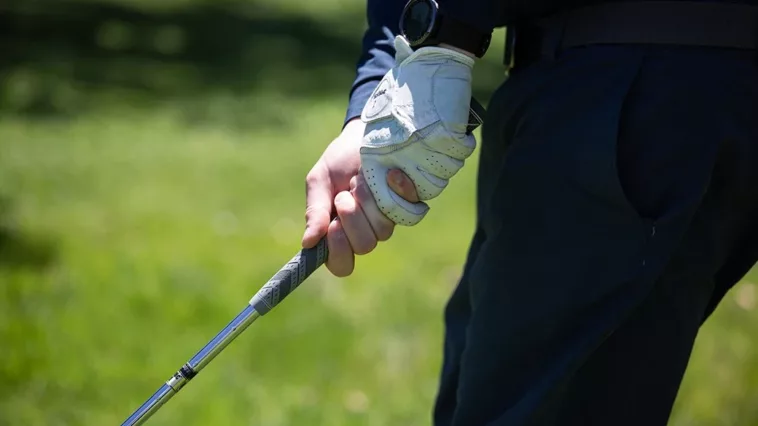Grip is an essential element that plays a vital role in determining a golfer’s overall performance. As it is the only point of connection with the club, your grip decides where your ball will fall. Achieving a good grip takes time and effort, but with our techniques and your continuous practice, you can improve your grip in no time.
Today’s topic of conversation revolves around the iron and driver grip. The driver grip and iron grip require different positions, forces, firmness, angles, and sizes. Mastering all of these aspects takes time, but with our assistance, you can quickly accomplish your goals.
Golfers who use the same club swing for both driver and iron shots need to improve their technique. There are specific instructions to follow and things to consider to achieve perfection in the iron and driver grip. This article covers the differences between iron and driver grips in detail.
Types of grips
In order to gain a clear understanding of what is optimal for driver grip versus iron grip, it is important to first have a grasp of the various types of grips available. There exist three distinct types of grips:
Weak grip
Here is a of factors that can contribute to a weak grip based on my personal experience. These include gripping the club in the palm, which can limit wrist mobility, as well as holding the club with the fingers while failing to show visible knuckles on the left hand. Additionally, a stretched thumb line while gripping the club can also result in a weaker grip.
A weak grip is ill-suited for the driver shot, which demands the ability to cover a long distance and generate high speed to achieve an optimal swing. Similarly, it is also unsuitable for an iron swing, which requires significant force and movement to propel the golf ball forward.
Neutral grip
One of the most commonly used grips in golf is the neutral grip, also referred to as the palms opposing grip. To adopt a neutral grip, position your hands in a manner such that the palm of your left hand is facing down, while the palm of your right hand is facing up, with both thumbs resting on the club. When executing a neutral grip, either one or half of your knuckles on the left hand should be visible.
Strong Grip
The most popular grip in professional golf is the strong grip, which helps maintain a square clubface for a longer duration and reduces the need to flip the hands or forearms to square the face at impact.
To achieve a strong grip, ensure that you can see at least two of your knuckles, and if necessary, strengthen it further. Additionally, position your right hand by placing its thumb on top of the left hand’s thumb, pointing to the left of the clubface instead of down the shaft’s middle.
While golfers often use a strong grip for the driver to minimize the risk of slicing, it can be utilized for every club in the bag. The strong grip has gained popularity because it enables golfers to swing freely without worrying about missing shots to the right. If you typically fade or slice your golf shots, strengthening your grip is highly recommended.
Grip Size
The size of golf grip that is appropriate for you is primarily determined by your hand size, although personal preference may also play a role. Most golf grips are available in a standard size, which is designed for individuals with average hand sizes, unless otherwise specified.
In addition to the standard size, there are also larger options available, such as midsize, oversized, and jumbo grips, as well as an undersized option for those with smaller hands. Professional golfer Bryson DeChambeau is known for using jumbo grips.
Many golfers prefer larger grips for their irons to improve their feel, while sticking to standard grips for their woods and driver to facilitate turning the club over and squaring up the face.
If purchasing larger grips is not an option, adding layers of tape under the grip can slightly increase the grip’s thickness.
Grip Firmness
When choosing a golf grip, the level of firmness should be considered, although it has minimal impact on performance. For instance, some golfers opt for a softer grip on their shorter irons as it enhances the feel of the clubs and their connection to the shot.
However, few golfers use soft grips for their longer clubs, such as the fairway woods and driver, as the softer feel may seem unfamiliar at higher swing speeds. For consistency, it is advisable to stick with the same grip throughout your golf bag.
Golf gear manufacturers like Winn and Golf Pride produce exceptional grips, including wrap and cord grips. It is recommended that you choose a grip that provides the highest level of comfort, as this will enable you to perform at your best on the golf course. To guarantee a long-lasting and high-performing grip, it is crucial to avoid certain golf brands and always choose a quality brand.
Conclusion
grip is a crucial aspect of the game of golf, as it influences your shot tendencies. It is the only point of contact between the golfer and the club, transmitting power and control throughout the swing. After learning about the various grip options and determining the best grip for your driver and iron, consider adjusting the strength of your grip if your ball misses to the right or left.
However, achieving a good and natural grip takes time and dedication, as constant practice and determination are required to succeed. For more golf insights, follow us.
